We’ve all seen images of history’s most famous paintings — like Vincent van Gogh’s 1889 piece The Starry Night or Leonardo da Vinci’s 16th-century magnum opus, the Mona Lisa — but what are the odds you’ve seen them in person? Thankfully, many of history’s greatest artworks are on display to the public at museums around the world. Here are seven of the most famous paintings in the world and where to find them.
Johannes Vermeer’s Girl with a Pearl Earring – Mauritshuis, The Hague, The Netherlands
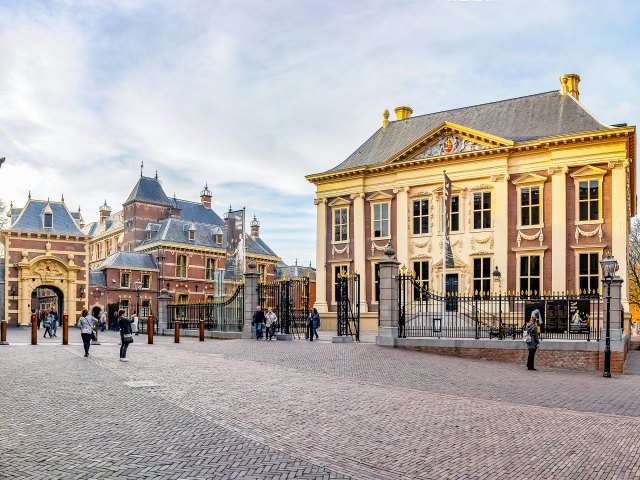
The Hague’s Mauritshuis art museum only contains about 800 Dutch paintings, but among them you can find the most distinguished work of Dutch artist Johannes Vermeer, Girl with a Pearl Earring. The painting — which depicts a young girl wearing a blue headscarf and donning a distinct pearl earring — was created circa 1665. Much like the Mona Lisa which depicts a similar subject, Girl with the Pearl Earring measures a relatively tiny 18 by 15 inches.
Vermeer’s magnum opus wasn’t widely appreciated during his lifetime, but it became highly popular in 1995 upon its exhibition at the National Gallery of Art in Washington, D.C. The painting briefly toured Japan, Italy, and the United States while the Mauritshuis museum underwent renovations in 2012, but upon its return, the museum decided that they would no longer loan out the Girl with a Pearl Earring. They made one exception, however, as the painting was part of a spring 2023 showcase at a Vermeer exhibit at Amsterdam’s Rijksmuseum.
Vincent van Gogh’s The Starry Night – Museum of Modern Art, New York, New York

Located halfway between Rockefeller Center and Central Park in Midtown Manhattan (and easily accessible from the subway) subway, the Museum of Modern Art boasts an impressive collection, but perhaps no artwork here is better known than Vincent van Gogh’s The Starry Night. The painting is now located on the museum’s fifth floor in the Alfred H. Barr, Jr. Galleries, though its creation occurred in Saint-Rémy in the south of France. The image was inspired by van Gogh’s view from his window at the Saint-Paul-de-Mausole, a psychiatric institution he stayed at from 1889 to 1890, and the work features a mix of blues and yellows that depict a nighttime scene — despite the fact that van Gogh drew the painting during the daytime. The Starry Night first appeared at MoMA as part of a van Gogh retrospective in 1935, and it was acquired on a full-time basis in 1941.
Leonardo da Vinci’s Mona Lisa – Louvre Museum, Paris, France
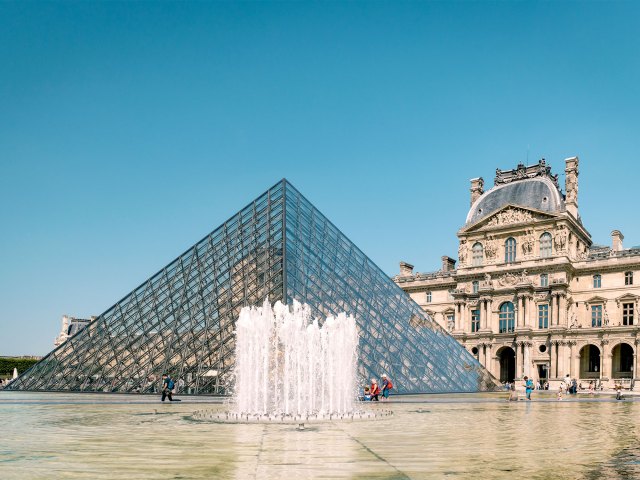
Inside the 70-foot-high glass pyramid that tops the main entrance to Paris’s Louvre Museum you’ll find countless famed works of art. Chief among those exhibits is Leonardo da Vinci’s Mona Lisa, a painting that measures only 30 by 21 inches but has made an outsized impact on the art world for da Vinci’s masterfully realistic depiction of his subject, and particularly her intriguing smile.
Visitors can find the Mona Lisa in the museum’s largest room, the Salle des États (known otherwise as Room 711), where the painting has been showcased since 1966. The room itself was designed by architect Hector Lefuel and built between 1855 and 1857 to host Napoleon’s legislative sessions. Upon being absorbed by the Louvre in 1870, the Salle des Étas initially showcased French paintings, and those works were later replaced by Venetian paintings after World War II. Since 2005, the Mona Lisa has been kept behind a glass case allowing temperature and humidity-control to prevent further warping of the poplar wood it’s painted on.
Pablo Picasso’s Guernica – Museo Reina Sofía, Madrid, Spain
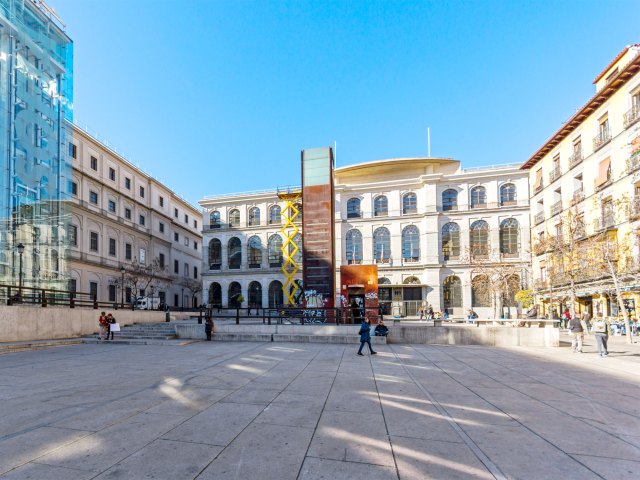
Pablo Picasso’s Guernica was initially created to be showcased at the International Exposition in Paris in 1937. Upon the outbreak of World War II in 1939, the painting was loaned to the Museum of Modern Art in New York City for safekeeping. It remained in MoMA’s custody long after World War II per Picasso’s wishes, and wouldn’t return to Spain until 1981 after democracy had been restored. Upon its return, it was initially housed in the Casón del Buen Retiro annex of Madrid’s Prado Museum, though was moved to its current location — the Reina Sofía — in 1992.
Guernica encompasses an enormous area for a work of art, measuring 11.5 by 25.5 feet in size. Despite its impressive measurements, it only took Picasso three weeks to complete this artistic critique of the Spanish Civil War. The Reina Sofía is closed Tuesdays and certain holidays, but also offers admission free of charge during specific hours, so be sure to check the museum’s schedule so that you can witness this expansive Picasso work for yourself.
Sandro Botticelli’s The Birth of Venus – Uffizi Gallery, Florence, Italy

Created circa 1485 by Florentine artist Sandro Botticelli, the Birth of Venus depicts the goddess standing upon a giant scallop shell surrounded by other mythical figures. The painting is located on the second floor of the Uffizi Gallery in Florence, Italy, in rooms 10-14 — all of which are dedicated to the works of Boticelli. Early in its existence, the Birth of Venus was held at the Medici Villa of Castello, and scholars have long believed that Botticelli was originally commissioned to create the work by the noble Medici family. Measuring 5 feet, 8 inches, by 9 feet, 2 inches, the painting was later acquired by the Uffizi Gallery and was displayed to the public in its current location starting in 1919. The Birth of Venus is often considered artistically inseparable from Botticelli’s other most notable work, Primavera, which is located in the same gallery and measures an even larger 6 feet, 8 inches, by 10 feet, 4 inches.
Grant Wood’s American Gothic – Art Institute of Chicago, Illinois
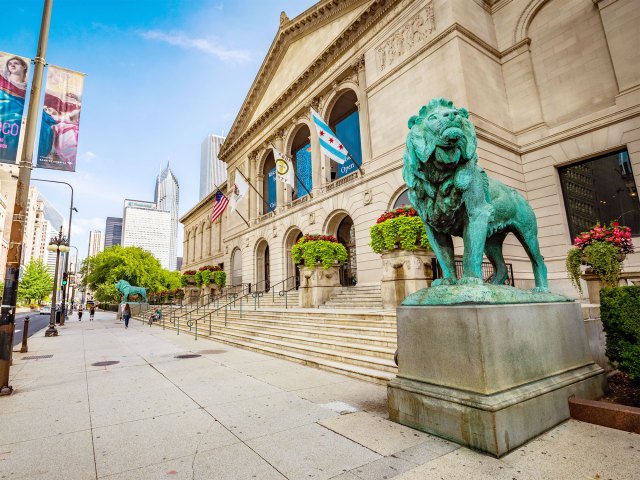
American artist Grant Wood unveiled his now famous American Gothic — often viewed as a commentary on American rural values — in 1930. It was first exhibited at the Art Institute of Chicago’s 43rd Annual Exhibition of American Paintings and Sculpture, where it won a bronze medal and $300 prize. Though American Gothic still calls the Chicago museum its permanent home, the painting has toured the country and been exhibited in locations including Cedar Rapids, Iowa; Washington, D.C.; and New York City.
At 31 by 26 inches, the piece depicts a farmer and his daughter posing stiffly in front of their farmhouse. However, the man depicted in the painting isn’t a farmer at all — it’s Wood’s dentist, then-62-year-old Byron McKeeby, who agreed to pose for the painting. in the painting’s lower right corner, the viewer can see Wood’s signature hidden within the farmer’s dirt-stained overalls. The work currently resides in the Arts of the Americas section of Chicago’s Art Institute, specifically in Gallery 263 alongside paintings by Thomas Hart Benton and Archibald John Motley Jr.
Edvard Munch’s The Scream – National Gallery and Munch Museum, Oslo Norway
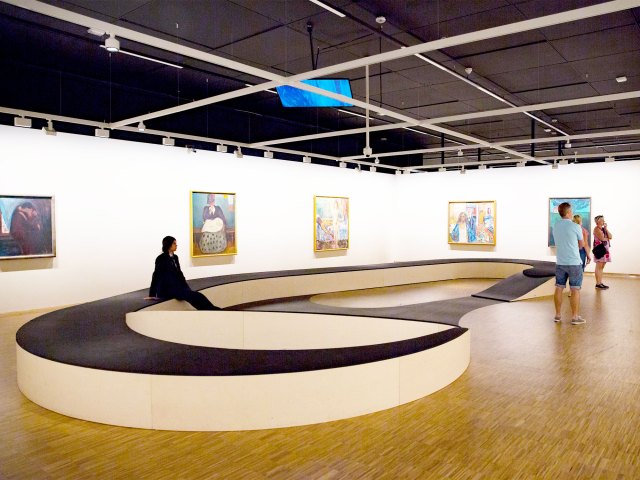
There are two different locations in Oslo, Norway, where you can view various versions of Edvard Munch’s expressionist masterpiece The Scream. The painting has become famous for its iconic image of an agonized face which is considered to represent the anxiety of the human condition. Oslo’s National Museum of Art is home to a collection of paintings from the artist, including an 1893 version of the piece that was donated to the gallery in 1910. That painting is one of 18 works by its creator that are located within the National Gallery’s Munch room.
Elsewhere in the city is the MUNCH Museum, where three versions of The Scream — a painting, a drawing, and a print — are showcased at the Edvard Munch Infinite exhibit on the museum’s fourth floor. Due to the fragile materials used to create the piece of art (some used tempera and oil on cardboard, whereas others were drawn using crayon also on cardboard), only one variant of The Scream is on display at the MUNCH Museum at any given time. This assures a lack of exposure to light and other factors that may lead to it being damaged or suffering any further wear.
More from our network
Daily Passport is part of Inbox Studio, which publishes content that uplifts, informs, and inspires.
















